Stepdown DC-DC working range at 5V output 2021-10-18
Background
Enoki would like to get 5V power supply driven by batteries.
Summary
A Chinese made tiny stepdown DC-DC that Amazon.co.jp sells may be capable to 1.2A output.
Specifications
1. Module Properties: Non-insulated deceleration module (back)2. Modification: Simultaneous correction
3. Input Voltage: DC4.75V-23V
4. Output Voltage: DC1.0V-17V (adjustable, output is smaller than input)
5. Output current: Rated current 1.8A (3A max, cannot be extended)
6. Output ripple: 30 mV (unloaded)
7. Load adjustment: ±0.5%
8. Voltage adjustment: ±2.5%
9. Operating Temperature: Industrial (-40 to +85 degrees Celsius)
10. Short circuit protection: No (do not short circuit)
11. Input Reverse Protection: No (cannot be reverse)
12. Note: This product cannot be used to increase voltage. Output voltage is always less than the input voltage.
Task
Task1
How much input ripple voltage and current?
Task2
How much input voltage range varies for output current?
Task3
How much is the converter efficient?
Method
Enoki used linear 10A power supply DM-310MV for the DC-DC input, and applied fixed resistors for the DC-DC output.
DSO SDS1102 CH1 and CH2 measured DC-DC input and output each. DSO Measurement peak-to- peak measured output ripple or noise.
DMM PC510 measured output current.
Photo1 shows the measurement. Without the plus precision screw driver in Photo1, it is difficult to adjust output voltage.
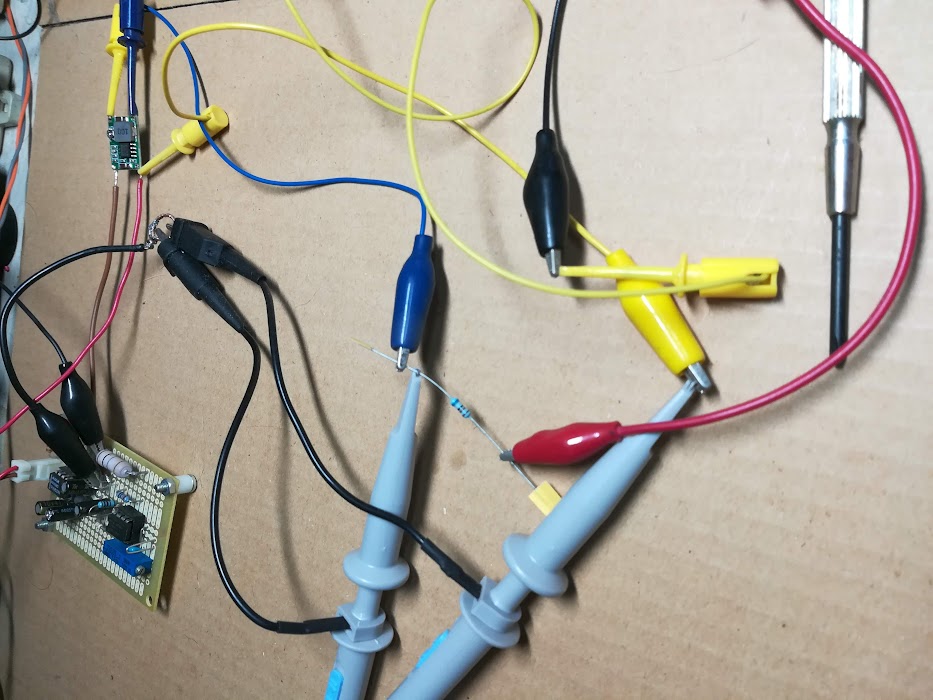
Input current measured by input resistor 0.1Ω of the self made peak current detector. The wire connecting the detector and DC-DC converter is 0.2SQ thick and 0.1m long. The length was equivalent to 58mΩ by calculus. Enoki measured for output resistor 680 and 68 Ω as well.
Photo2 shows the measurement for output resistor 20Ω.

PC510 600 mA fuse melted down because of Enoki's careless mistake twice. So PC510 current range was fixed for 10A.
Result
Startup voltage
Figure1 shows the result. The minimum starting input voltage was 5.3V for output 5mA. It
means that the DC-DC needs a breeding current to hold the output voltage. While the starting
minimum input voltage was 6.6V for the output 1.2A
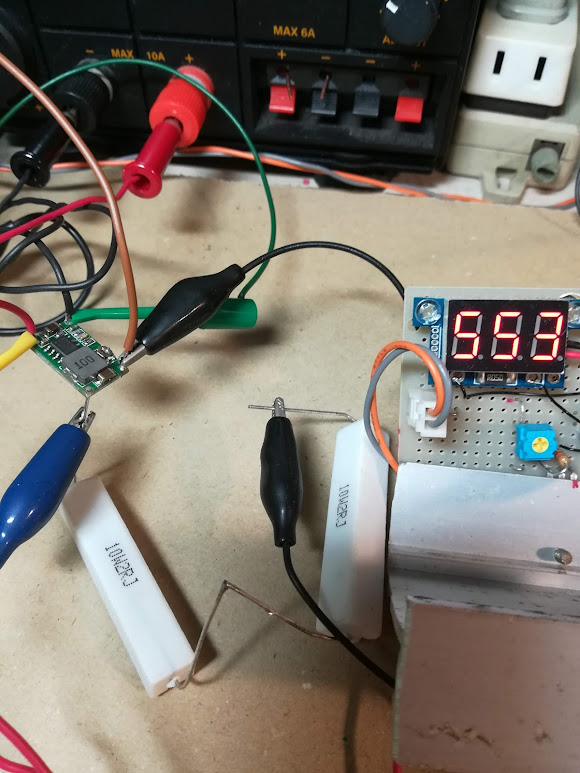
Otherwise 50 and 224 mA had wider range.
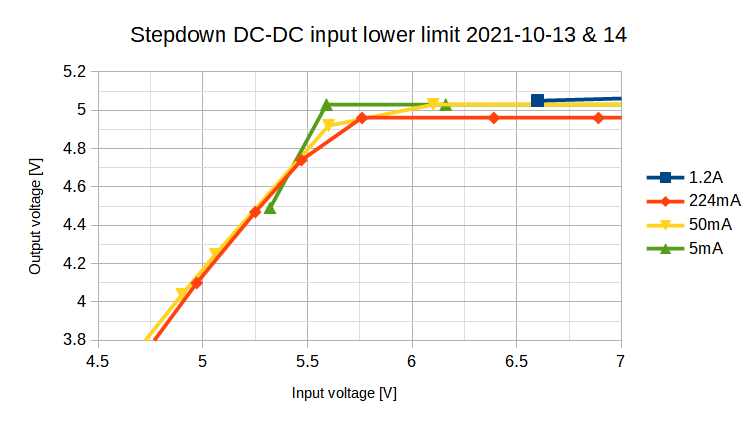
Input ripple voltage or current
DSO observed neither.
Output spike noise
DSO observed it for output 1.2A only as shown in Figure2. Time division was 50ms. The yellow
signal CH1 was input voltage (5V/div). The blue signal CH2 was output voltage (1V/div).
Figure3 shows the frequency of the spike noise. Time division was 500 ns. The frequency was 329 kHz. Looking at the DC-DC converter chip data sheet MP2307, oscillation frequency is 300 to 380 kHz. It coincides certainly.
Efficiency at 1.2A
The digital ammeter of self made peak current detector measured input current. The efficiency
was constant for varying input voltage as shown in Table1.
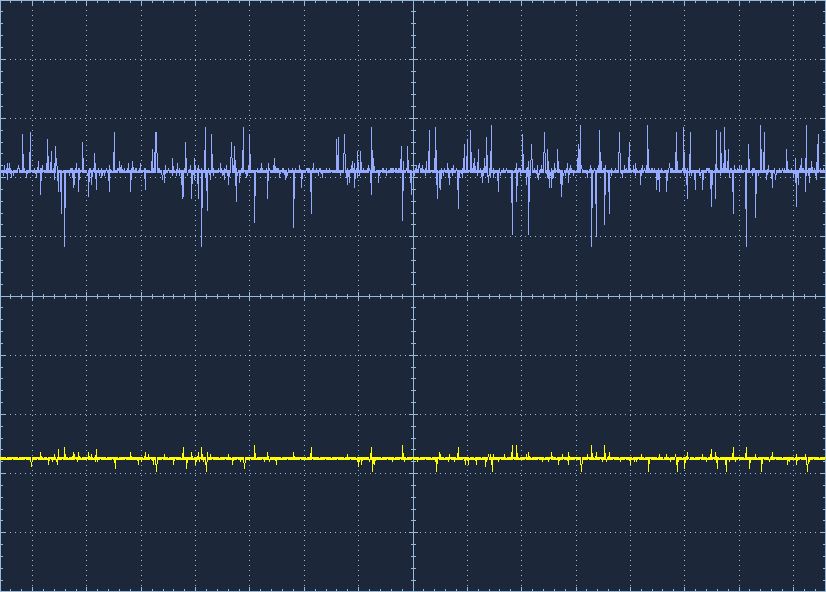
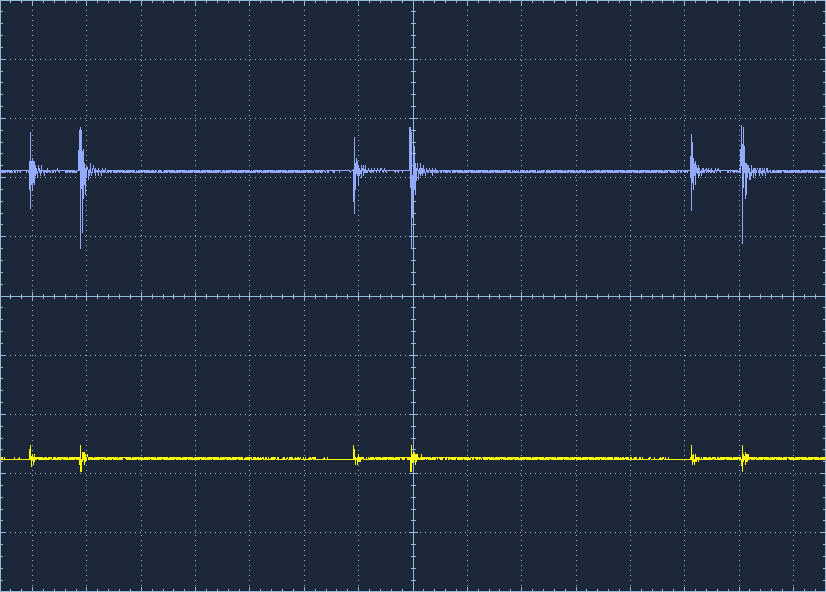
| Input voltage [V] | 6.73 | 12.1 |
| Input current [A] | 0.984 | 0.555 |
| Output voltage [V] | 5.05 | 5.06 |
| Output current [A] | 1.19 | 1.20 |
| Efficiency [%] | 91 | 90 |
Inductor temperature rise up
The inductor temperature was considerably hot at 1.2A output, though it endured half a day
continuously.
Conclusion
The stepdown DC-DC converter is small 12.6 x 17.9 [mm]. It does not dissipate like linear regulators. And so it might be good for battery driven devices.
With a stable loader, Enoki can confirm that the stepdown DC-DC will work at 0.3 to 1A range
Enoki planed DMM PC510 internal input resistor for a part of load resistor. But the 600 mA fuse blew up. when excess occurring possibility, the plan was wrong.
© Enoki 2021 October 18